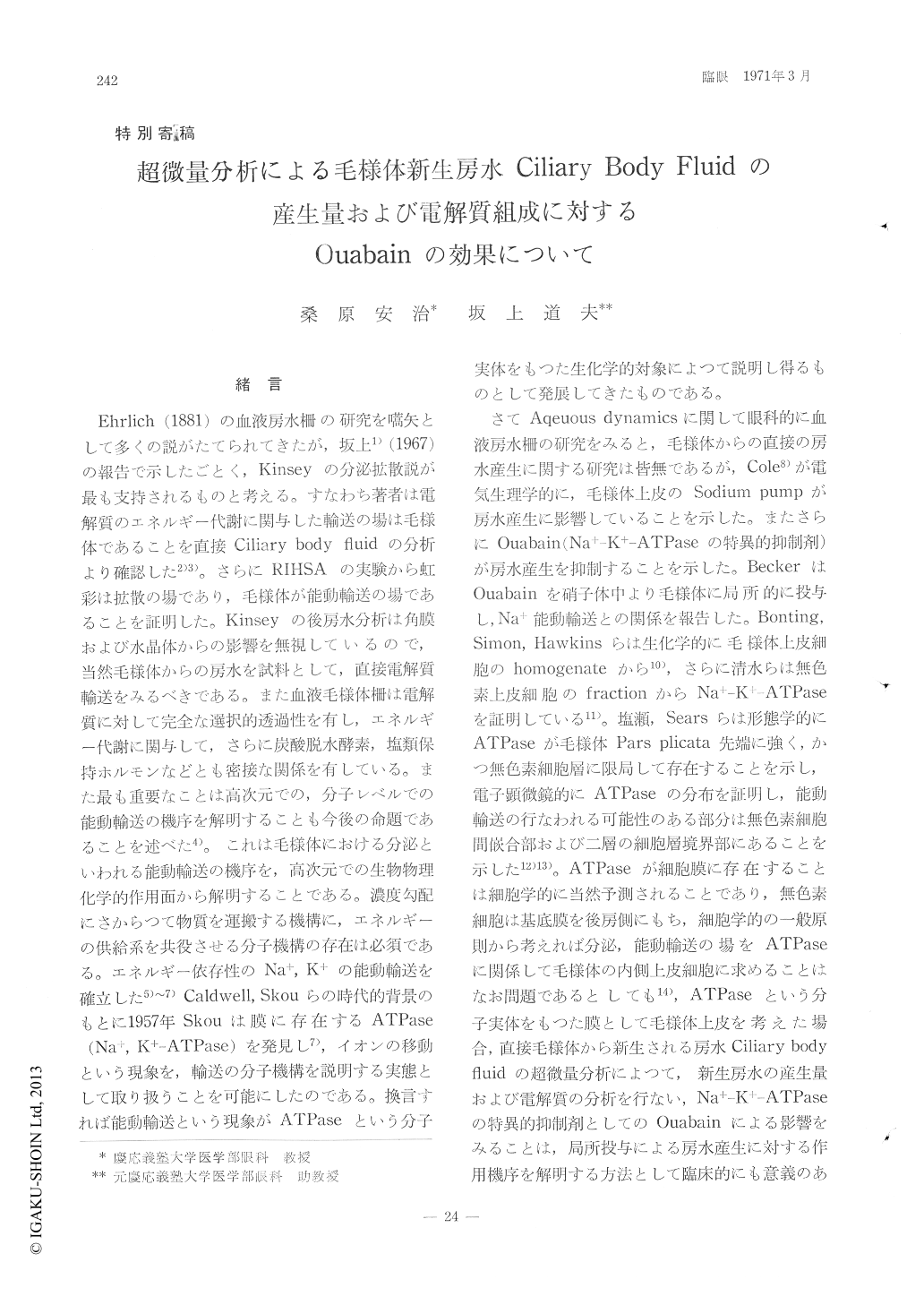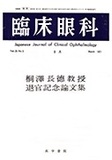Japanese
English
- 有料閲覧
- Abstract 文献概要
- 1ページ目 Look Inside
緒言
Ehrlich (1881)の血液房水柵の研究を嚆矢として多くの説がたてられてきたが,坂上1)(1967)の報告で示したごとく,Kinseyの分泌拡散説が最も支持されるものと考える。すなわち著者は電解質のエネルギー代謝に関与した輸送の場は毛様体であることを直接Ciliary body fluidの分析より確認した2)3)。さらにRIHSAの実験から虹彩は拡散の場であり,毛様体が能動輸送の場であることを証明した。Kinseyの後房水分析は角膜および水晶体からの影響を無視しているので,当然毛様体からの房水を試料として,直接電解質輸送をみるべきである。また血液毛様体柵は電解質に対して完全な選択的透過性を有し,エネルギー代謝に関与して,さらに炭酸脱水酵素,塩類保持ホルモンなどとも密接な関係を有している。また最も重要なことは高次元での,分子レベルでの能動輸送の機序を解明することも今後の命題であることを述べた4)。これは毛様体における分泌といわれる能動輸送の機序を,高次元での生物物理化学的作用面から解明することである。濃度勾配にさからつて物質を運搬する機構に,エネルギーの供給系を共役させる分子機構の存在は必須である。
A study was made of the effect on ciliary body fluid (newly formed aqueous humour dire-ctly from the ciliary body epithelium) of the cardiac glycoside, ouabain, applied topically.
Topical application of ouabain caused a mar-ked fall in the rate of ciliary body fluid forma-tion.
Ouabain did not affect its electrolyte compo-sition but it caused a increase in the ciliary body fluid K.
Ouabain may reflect an action of the inhibitor on the peculiar secretory processes of the ciliary body cells.

Copyright © 1971, Igaku-Shoin Ltd. All rights reserved.


